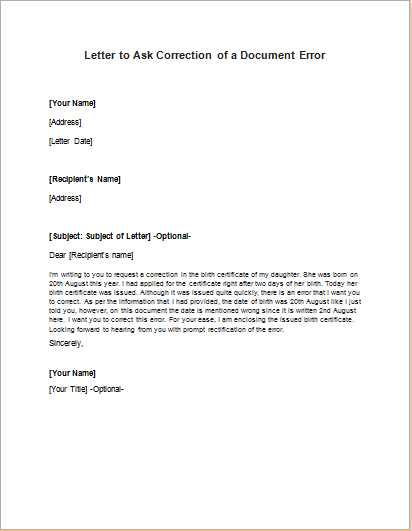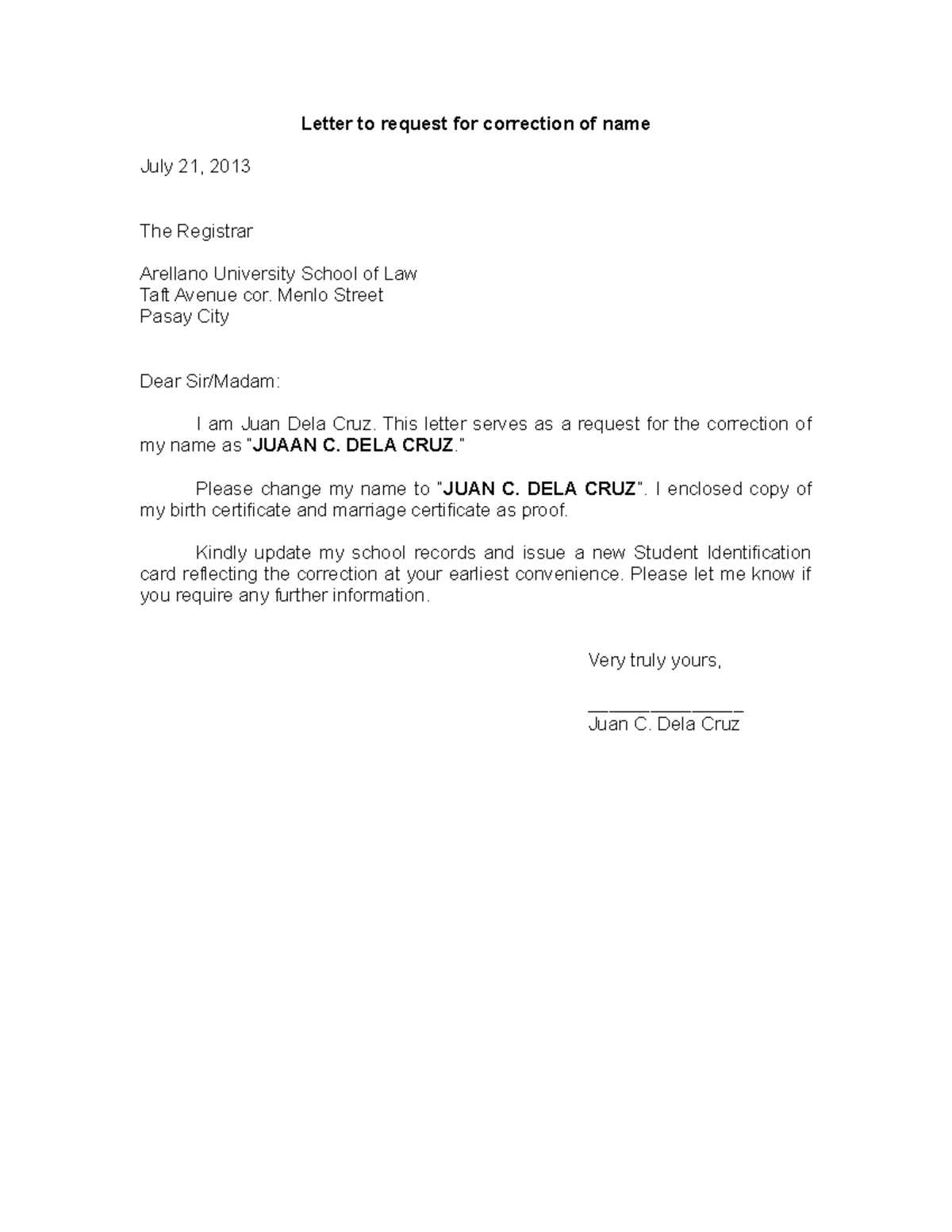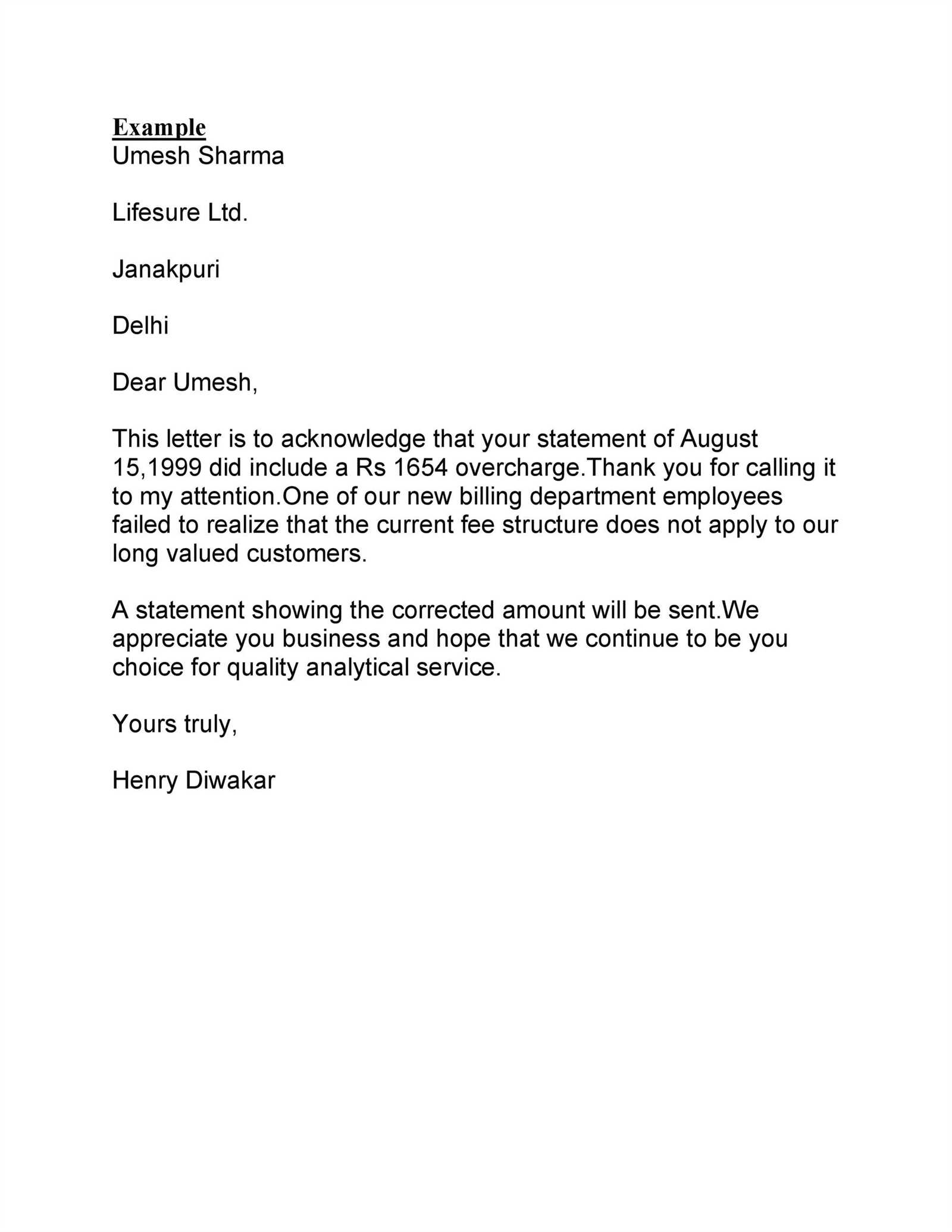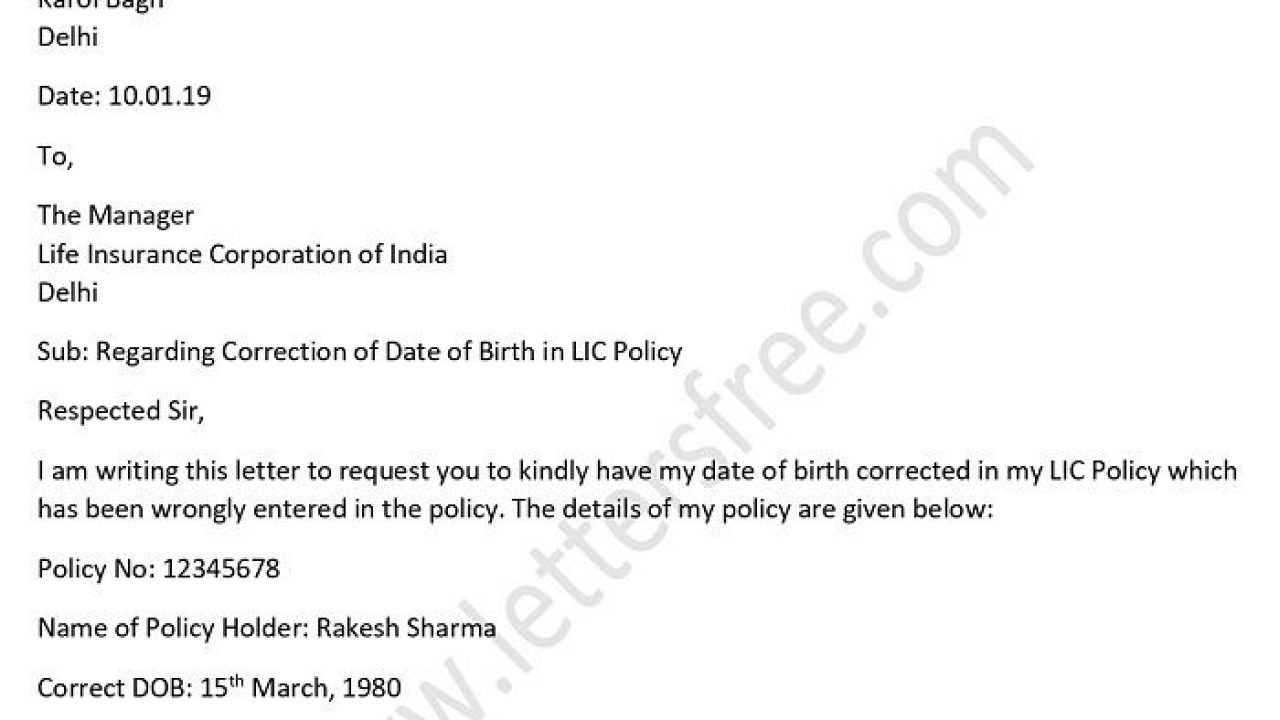Correction letter template

To draft a correction letter, keep the tone professional and clear. Start by acknowledging the error politely and explain the situation with accuracy. Avoid lengthy justifications–focus on the facts and how the mistake will be addressed moving forward.

Use a straightforward structure: introduce the mistake in the opening lines, provide the necessary context in the following paragraph, and conclude with a positive note on resolution. A well-crafted correction letter not only fixes the issue but also helps maintain trust and transparency.
Tip: When referring to the correction, be specific about what has changed or will change. This reassures the recipient that the situation is under control and will not be repeated. Be sure to include any relevant dates or details, if applicable.
Here’s the corrected version:
Make sure the date on the header matches the latest communication. Double-check that the recipient’s name is spelled correctly and their title is accurate. For a more professional tone, replace informal phrases with precise language, particularly in the opening statement. Ensure all numerical values are formatted consistently. If there’s a specific correction regarding content, highlight it in a clear and concise manner, using bullet points if needed for clarity.
Remember, corrections should be brief and to the point. Avoid repeating the same information unless it’s necessary for context. Ensure that the closing sentence reflects a willingness to continue the discussion if further clarification is needed. This can help maintain a positive and constructive tone.
Steps to Clearly State the Error and Its Correction
Examples of Common Mistakes and How to Fix Them
Finalizing the Correction Letter: Closing and Signature
Begin by briefly stating the error in clear and precise terms. Avoid long explanations and focus on what exactly went wrong. For example, instead of saying “there seems to be a small issue,” directly mention, “The invoice contains an incorrect billing amount.” This removes ambiguity and provides clarity.

Next, provide the corrected information. This step should be equally direct. Specify the new details and how they resolve the issue. For instance, “The correct total amount is $150, not $200, as initially stated.” Ensure the reader understands how the correction addresses the problem.
Common mistakes in correction letters include vague descriptions of errors or unclear explanations of how the issue is fixed. Be as specific as possible. A frequent example is a letter stating, “The information provided was incorrect,” without clarifying what was wrong or how it was corrected. Correct this by stating the exact nature of the mistake and the correction made.

For finalizing the letter, end with a polite closing that invites further questions if needed. You could write, “Should you have any questions regarding this correction, feel free to contact me.” Then, add a professional sign-off, such as “Sincerely” or “Best regards,” followed by your name and position.
These subheadings focus on specific aspects of writing a correction letter, providing readers with practical guidance.
State the Correction Clearly
Be direct and precise when stating the correction. Clearly explain what needs to be changed, offering the correct information. Avoid vagueness or unnecessary elaboration. This makes the letter simple and focused.
Maintain a Professional Tone
Even if the correction is addressing a mistake, keep the tone polite and neutral. Avoid sounding confrontational or accusatory. A calm, respectful approach helps maintain a positive relationship with the recipient.
Provide Supporting Details
When applicable, provide evidence or context to back up your correction. This can include reference numbers, dates, or specific examples to ensure the recipient fully understands the mistake and how to correct it.
Be Brief and Concise
Avoid unnecessary details that don’t directly relate to the correction. Stay on topic and keep the letter short, ensuring it’s easy to read and understand quickly.